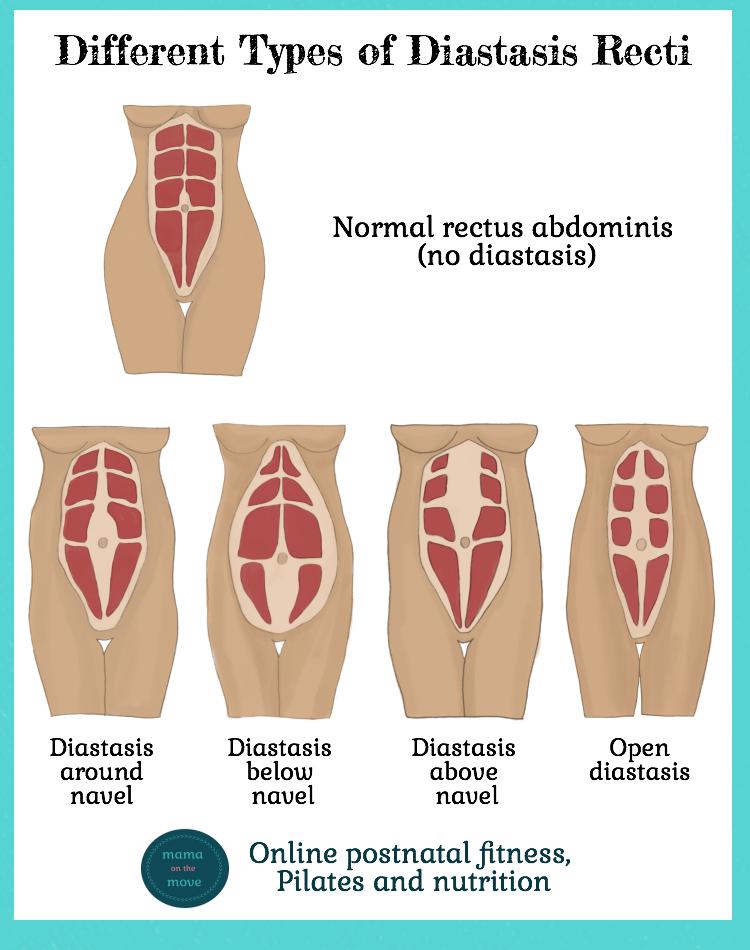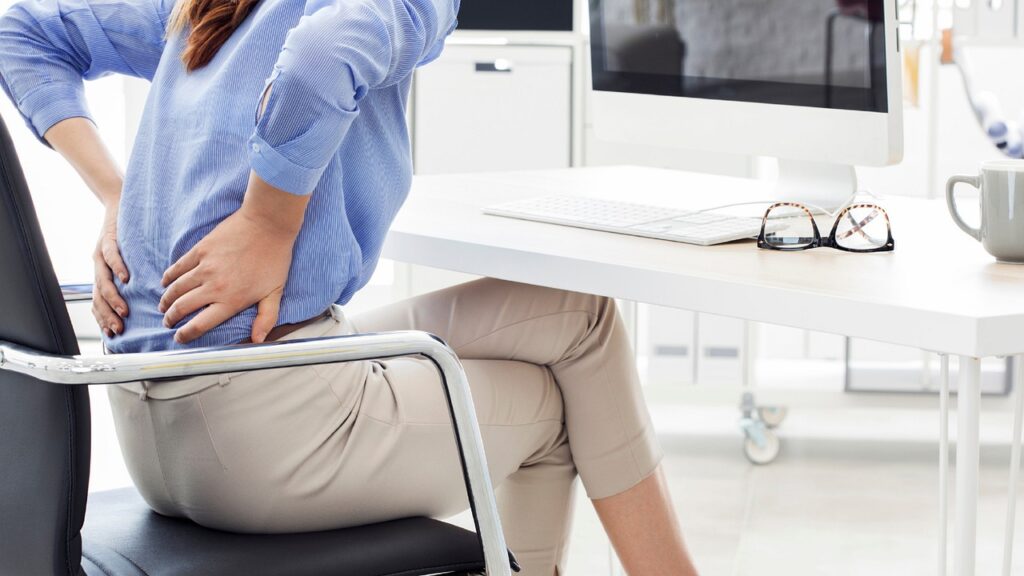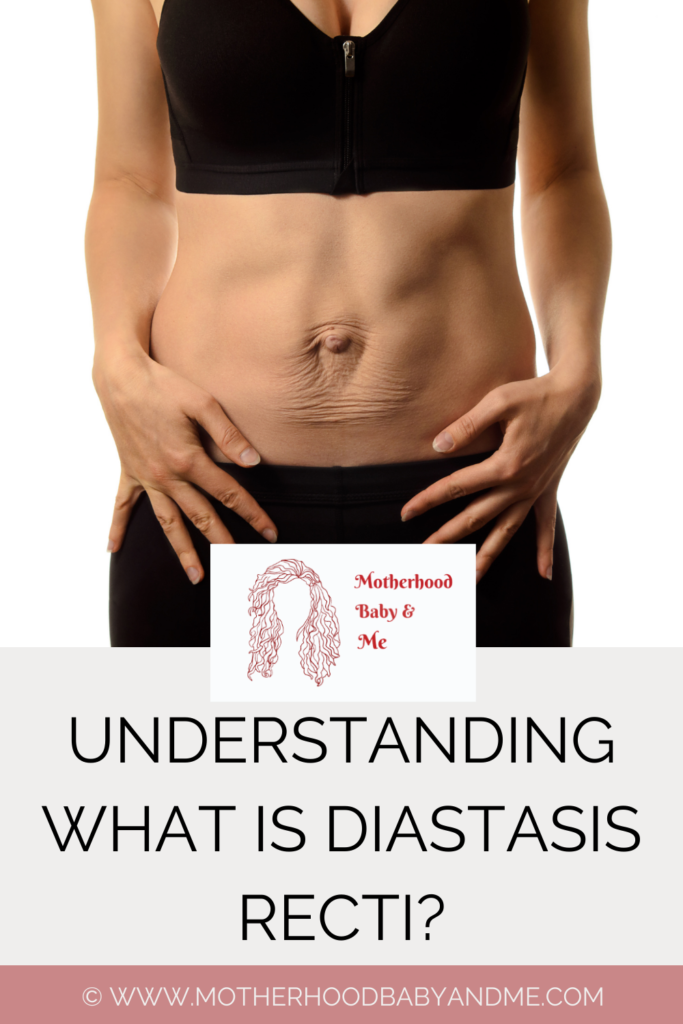I was laying in bed after giving birth to my first child. It did not go as planned, and my body was in emotional and physical shock! Being concerned about being able to see the bubbles of gas passing in my gut (which looked like another baby rolling around!), the nurse assessed my stomach and said, “You look like you have a pretty large gap of diastasis recti.” I was scared and clueless as to what she just said! “What is diastasis recti?” I asked timidly.
Simply put, diastasis recti (or DR) is a gap in the abdominal muscles that are in the front of the torso. These muscles are also known as the “six pack”. This gap can appear anywhere from the top of the ribcage to the pubic area. Take a look at the image below to see what I mean.
A Separation In The Abdominal Muscles

Typically, the weakest area of a diastasis recti is right around the navel. This puts a person at risk for ambilocal hernias. This with hernias and diastasis recti should talk to their doctor regarding how to fix this gap appropriately.
What Causes Diastasis Recti?
There are different causes for diastasis recti. However, among women, a very common cause is pregnancy. Close to 80% of all pregnant women develop DR within their third trimester! With most of these cases, the gap closes completely during the postpartum healing period. Unfortunately for some (like myself), the gap does not close, leaving you with diastasis recti and trying to figure out how to fix it!
Did you know that men can develop diastasis recti too? Everyone has abdominal muscles. The reason men can develop diastasis recti is due to being overweight. If there’s a man with a lot of “belly”, he could have abdominal separation due to the amount of pressure put on those muscles.
Additionally, babies can be born with diastasis recti. In some cases, babies may be born with abdominal separation. The good news is that often these gaps close on their own while the baby grows and develops. If you suspect your child has DR, be sure to talk to their pediatrician about this! Don’t be afraid to ask for a referral to a pediatric physical therapist who would also be able to assess your child for DR.
So now you know that pregnancy and being overweight can both be causes for diastasis recti. Also, you now know that sometimes babies can be born with diastasis recti.
How DR Affects The Body
All of your body is synced and connected. Not one part is working in isolation from another part of the body. With this being said, when you have diastasis recti, your body will be compensating, strained, and put at risk for injury due to some muscles not being connected and functioning as they should. What are some health risk factors associated with diastasis recti?
Back Pain

Back pain is almost unavoidable when you have diastasis recti. The job of the abdominal muscles is to give support to the torso. When that support isn’t there, other muscles are trying to compensate to make up for the lack of function and added strain. This puts extra stress on your back, which leads to back pain.
Slipped Discs
Related to back pain, diastasis recti can increase your risk of having a slipped disc! Again, this is due to the fact that the muscles which usually offer support and strength to the functions and motions of the torso are not there! With the added stress put on your back and spine, it can leave you at an increased risk for a slipped disc years down the road.
Pelvic Floor Weakness
This one might come as a surprise to you. Did you know that your abdominal muscles are connected to your pelvic floor muscles? To learn what the pelvic floor is and what its function is in the body, read my article What Is The Pelvic Floor?
Share The Knowledge! Pin It!

Constipation

Guess what sits behind your abdominals and transverse muscle (the transverse muscle is like a “corset” that sits behind your abdominal muscles)? Yep! Your intestines! Those with diastasis recti, like myself, my have increased trouble with constipation. I’m sure you can assume why this is. Without the support of your abdominal wall, everything in your gut tends to bulge outward. The bowel has a harder time moving through the intestines, which leads to constipation.
If this is you, and you’re looking for quick relief to constipation, click here to read my article on constipation.
Poor Posture/Slouching
When your torso is not supported well by the abdominal muscles, it is very difficult for your body to have good posture. The muscles in your shoulders often try to compensate for the weakness in the torso area. This leads to soreness and poor posture within the shoulders. Poor posture can also lead to back pain.
If this describes you, and you’re in need of some good remedies for back pain, read my article Homeopathic Remedies For Back Pain.
However, the real solution to back pain related to DR is to take care of the root problem – your abdominal gap! Doesn’t it make sense to address the root cause of your bodily pain instead of treating the symptoms?
There are some great at-home programs for those with DR to help heal their gap, strengthen their core, and gain good quality of life again. Personally, I have done two programs for my DR. Both were good, but one was truly more effective and focused more on the core. This program was the Tupler Technique. To learn about this program and others, read my article Best Corrective Exercises For Diastasis Recti.
What Can You Do About Diastasis Recti?
Often, doctors will tell you the only true fix for DR is surgery. However, many women and men have been able to close their gap completely and bring great strength back to their core by doing at-home exercises!
I’ll speak from experience that when I did the Tupler Technique program, within days my back pain was gone. Within the first week or two, I noticed my constipation greatly improved as well! I felt stronger in my body and emotionally happier when I started seeing improvements in my body. You can learn more about the Tupler Technique here.
Be sure to find a good at-home program you like! The effort is worth the results!
Leave A Comment Below!

What did you learn from this article? Was there something that encouraged you? Share it with us in the comments below!
Want To Lear More?
If you enjoyed this article on diastasis recti, be sure to check out these other related articles below!
Best Corrective Exercises For Diastasis Recti
Homeopathic Remedies For Back Pain
How To Prevent Diastasis Recti
Severe Constipation During Pregnancy Remedies
Who Can Develop Diastasis Recti?